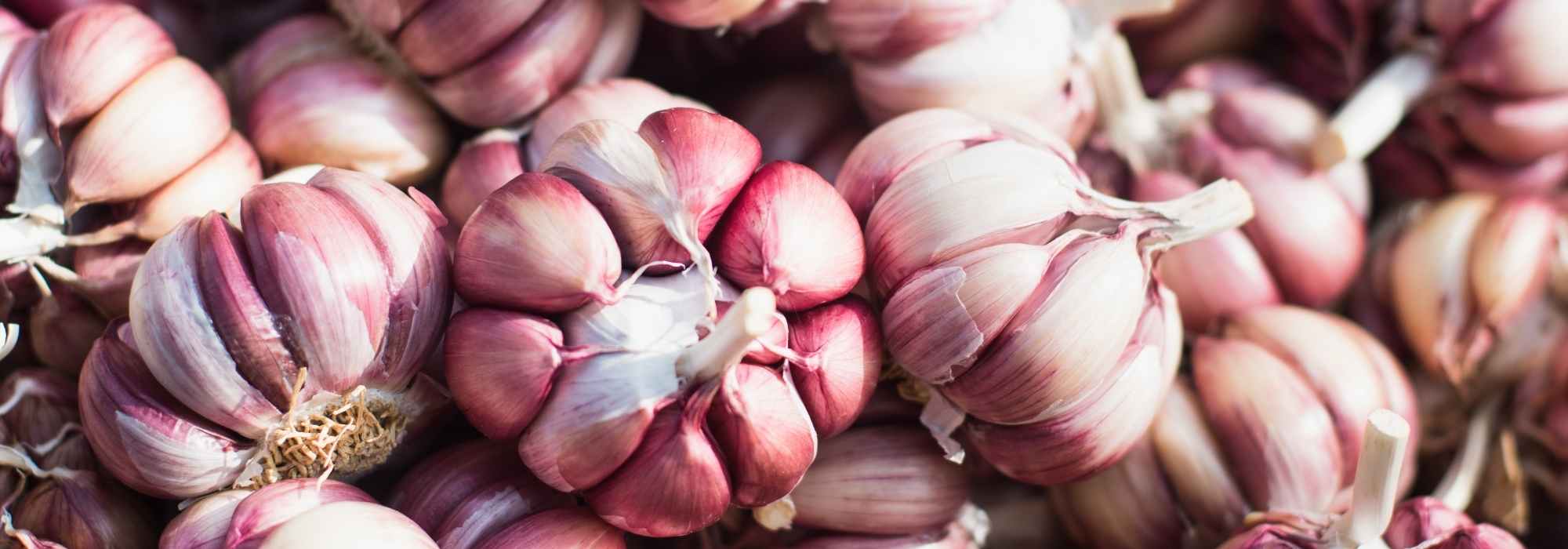
Choosing garlic: buyer's guide
Choosing the right varieties!
Contents
Garlic – Allium sativum– is a vegetable plant with numerous health benefits whose pods, with a pungent taste, are appreciated for enhancing the flavour of dishes. Garlic is the indispensable aromatic condiment of the vegetable garden! Purple garlic, white garlic, pink garlic or wild garlic, autumn garlic or spring garlic, there are different categories of garlic. This small fragrant, flavoursome bulb is harvested at different stages of ripeness, dried, as “aillet” or green and is planted, depending on variety, in spring or autumn. But which garlic to choose?
Here is our guide to help you from purchasing pods to choosing the right varieties according to your wishes, tastes and growing conditions.
Depending on planting and harvest season
Choice of varieties is also made according to another criterion: planting season. Garlic is harvested at different stages depending on ripeness, from April through to October. There are two types of autumn garlic: white garlic and purple garlic, such as garlic ‘Germidour’.
- White-garlic and purple-garlic varieties are planted in autumn, from October to January (they can be planted in autumn in southern regions). These autumn varieties are characterised by low dormancy and are able to germinate from late November. They are fairly early and hardy (purple garlic is even slightly earlier). White and purple garlic are harvested at ripeness in June and July as dry and semi-dry bulbs but can also be harvested earlier, while still young shoots, from April for example, and for consumption as green garlic or as “aillet”. Young stems and leaves, which have a fairly pronounced flavour, are also used then, delicious for flavouring new-season vegetables! Cultivation of autumn garlic is more complicated in regions with severe winters because it tolerates cold less well and yield may suffer.
- Pink garlic, such as ‘Gayant’ pink garlic, is reserved for spring cultivation. It is planted in February-March and harvested in June – July. There may be a one-month shift depending on varieties and climate. This spring garlic is better suited to regions with harsh winters because it germinates later than white and purple garlic.
- Other species such as rocambole garlic and wild garlic are perennial garlics that can persist for several years in the vegetable garden. They are preferably planted in spring, from March to May, for harvests from June-July to October.
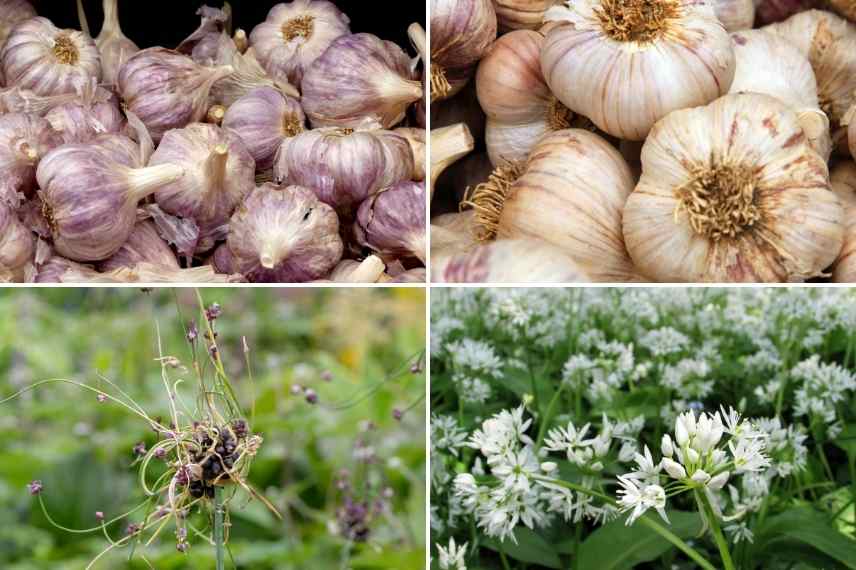
Purple garlic, white garlic, rocambole garlic and wild garlic
According to one's taste
On culinary side, garlic is eaten raw or cooked. A head or a pod of garlic has no odour. It is only when it is cut that its aromatic compounds develop. Everyone knows garlic’s scent. It’s all a matter… of taste! Raw garlic has a pungent taste sometimes considered too strong. Fresh or new garlic is much milder than garlic harvested at full ripeness; it has a more delicate flavour. Cooking reduces garlic’s strength.
Purple garlic ‘Germidour’ is an autumn variety with pronounced aromas, ‘White garlic ‘Messidrome’ offers pods (bulbils) with a milder flavour.
Wild garlic has an aroma quite close to that of common garlic but less pungent, more refined and more herbaceous.

Dried garlic braided and new garlic. Garlic develops its flavour when cut or cooked
Discover other Garlic Heads
View all →Available in 2 sizes
Available in 2 sizes
Available in 2 sizes
Available in 1 sizes
Available in 1 sizes
Available in 1 sizes
Available in 1 sizes
Available in 1 sizes
Available in 1 sizes
Available in 2 sizes
Depending on its colour
Garlic can be grown according to the specific colour of its bulbils. More than 25 varieties of garlic are distinguished and fall into three categories: white, purple or pink. They are recognised by the colour of their tunicate tunics. White garlic, such as ‘Messidrome’, produces very white bulbs with cream-coloured pods. Beneath a pink or pearly tunic, pink garlic (‘Arno’, ‘Flavor’), yields bulbils with white or pale pink flesh. ‘Germidour’ bulbs, striate with violet, hide pods of pinkish-white flesh. Some, such as ‘Paradour’, are set apart by a white membrane striate with violet, enclosing beige bulbils with a slight brown tint.
These varieties are sometimes labelled as ‘Rose de Lautrec’ garlic, ‘Violet de Cadours’ garlic or ‘Blanc de la Drôme’ garlic.
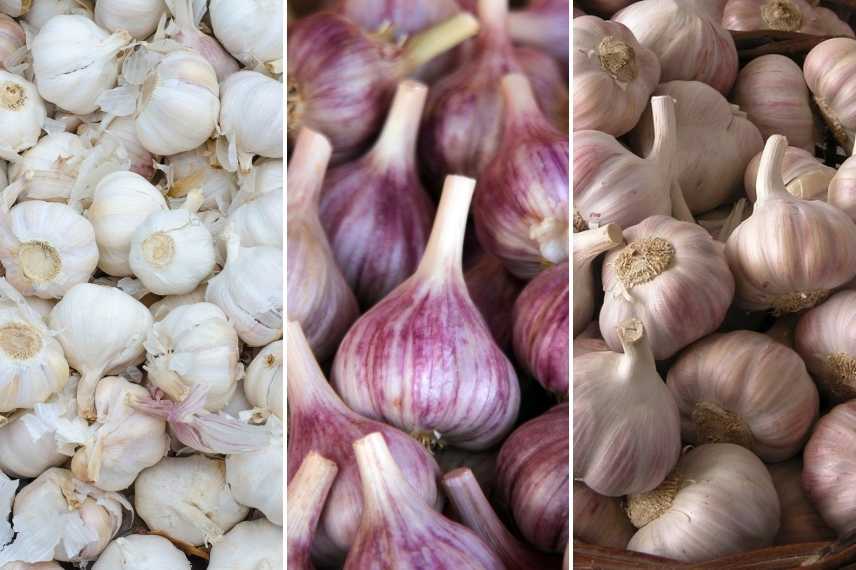
White garlic, purple garlic, ‘Rose de Lautrec’ garlic
Read also
Planting garlic, shallots and onionsDepending on yield
White garlic and purple garlic take the prize for yield! They consist of a large number of bulbils. Purple garlic ‘Germidour’ and white garlic ‘Messidrome’ are autumn varieties with good productivity. Very productive, they produce bulbs containing 10 to 15 pods each. They yield on average 10 to 14 garlic heads per kilo.
Pink garlic, meanwhile, offers lower productivity. ‘Printanor’ is a spring variety with good productivity, producing 12 to 18 small bulbils per head of garlic.
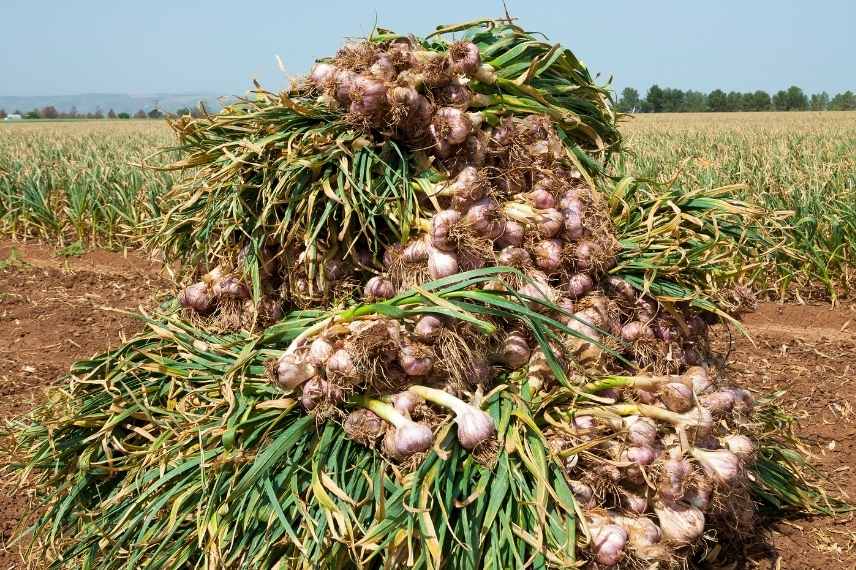
White garlic and purple garlic are most productive
Depending on size
You can also distinguish each garlic variety by pod size. A “head of garlic” is formed by bulbils of varying size. White and purple garlic produce large bulbs containing large bulbils. Pink garlic produces smaller pods and bulbils that keep longer.
- Spring garlic sizes: 28/40 mm, 35/+ mm, 45/+ mm diameter
- Autumn garlic sizes: 50/70 mm, 60/80 mm diameter

Based on its resistance to viruses
Garlic is susceptible to several viruses, in particular Onion Yellow Dwarf Virus (OYDV), also called ‘mosaic’, which is transmitted by aphids and causes striate markings and yellow mottling on leaves and yield losses sometimes exceeding 50%. Fortunately, today, selected garlic varieties, or regenerated free from pathogenous viruses have been developed. These seeds or young plants free of all viruses are particularly valuable. Most of the varieties we offer are disease-resistant.
Depending on storage
Garlic heads keep for several months, but shelf life varies depending on variety. Pink and purple varieties store better than white garlic, up to a year after harvest. Pink garlic is characterised by a long winter dormancy, guaranteeing excellent storage, two to three months longer than white garlic. White garlic has a limited shelf life of about six months.
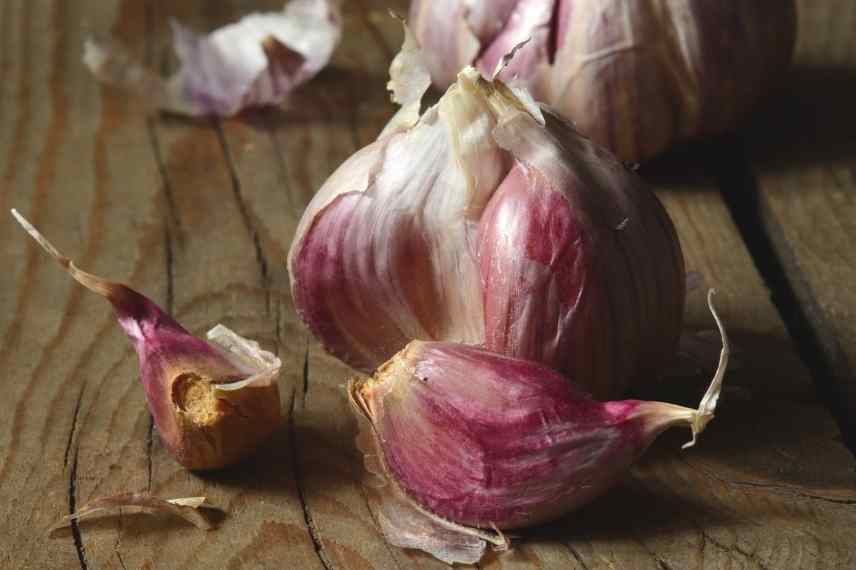
Pink and purple garlic store well
Ramsons and rocambole garlic: original garlic varieties!
Did you know there are garlics that lack a head of garlic? What’s more, they are perennial plants and very hardy, to at least -15°C and return year after year!
- This is the case for Bear’s garlic (allium ursinum) which is a perennial woodland garlic that naturalises easily. It displays a pretty white, star-shaped flowering in spring on edible foliage. All parts of this condiment plant are edible: the bulb, the flower buds and also the leaves. It is cooked as a vegetable, prepared like spinach or used as a condiment to flavour salads, omelettes, broths, soups… It is harvested over a long period, from January to October.
- The rocambole garlic (Allium scorodoprasum) is another species of garlic notable for bearing small edible bulblets at the top of spiralled stems. It is harvested in summer. It is used like chives. With its distinctive silhouette, it will find a place in ornamental garden as much as vegetable garden!
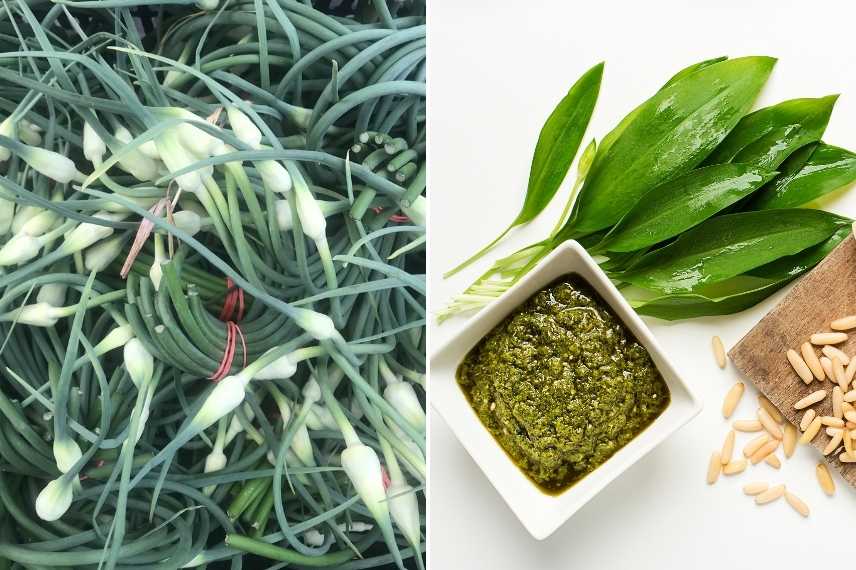
Rocambole garlic on left and its strange pods; on right a bear’s garlic pesto… Definitely worth trying!
- Subscribe!
- Contents
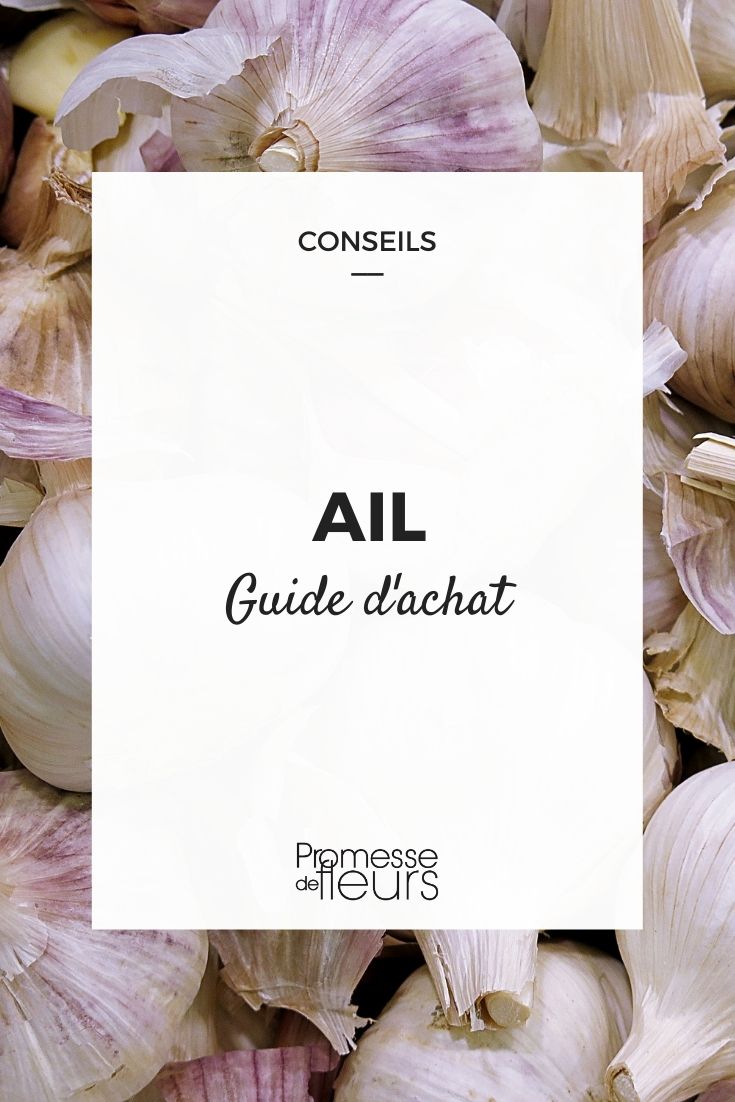































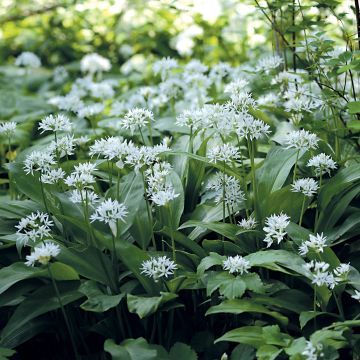
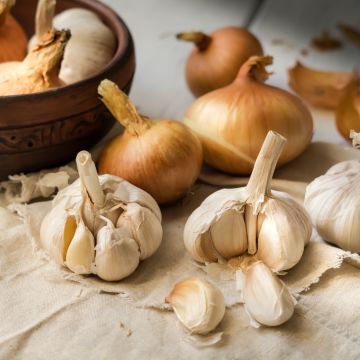
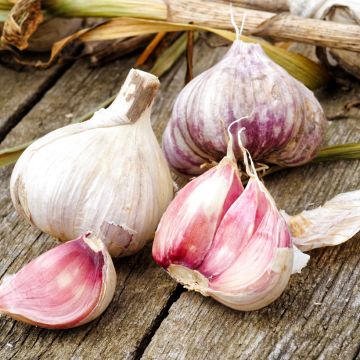
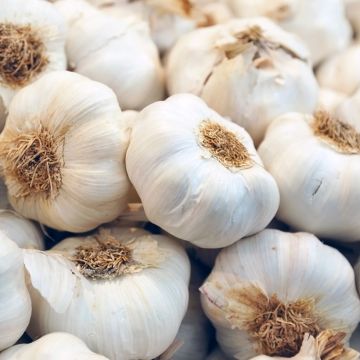
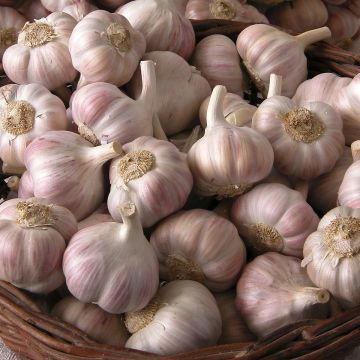
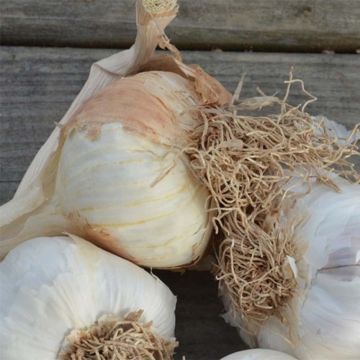
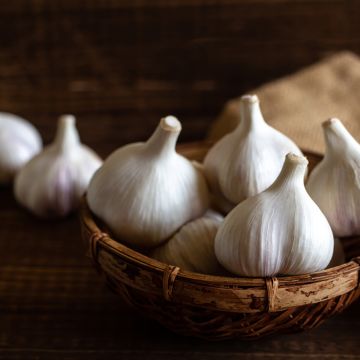
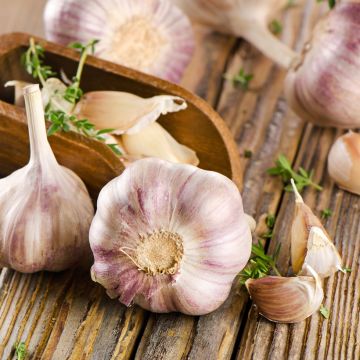
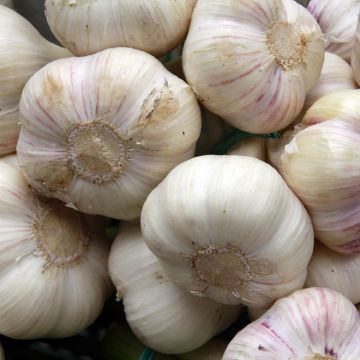
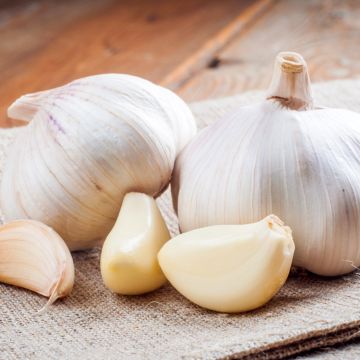
Comments